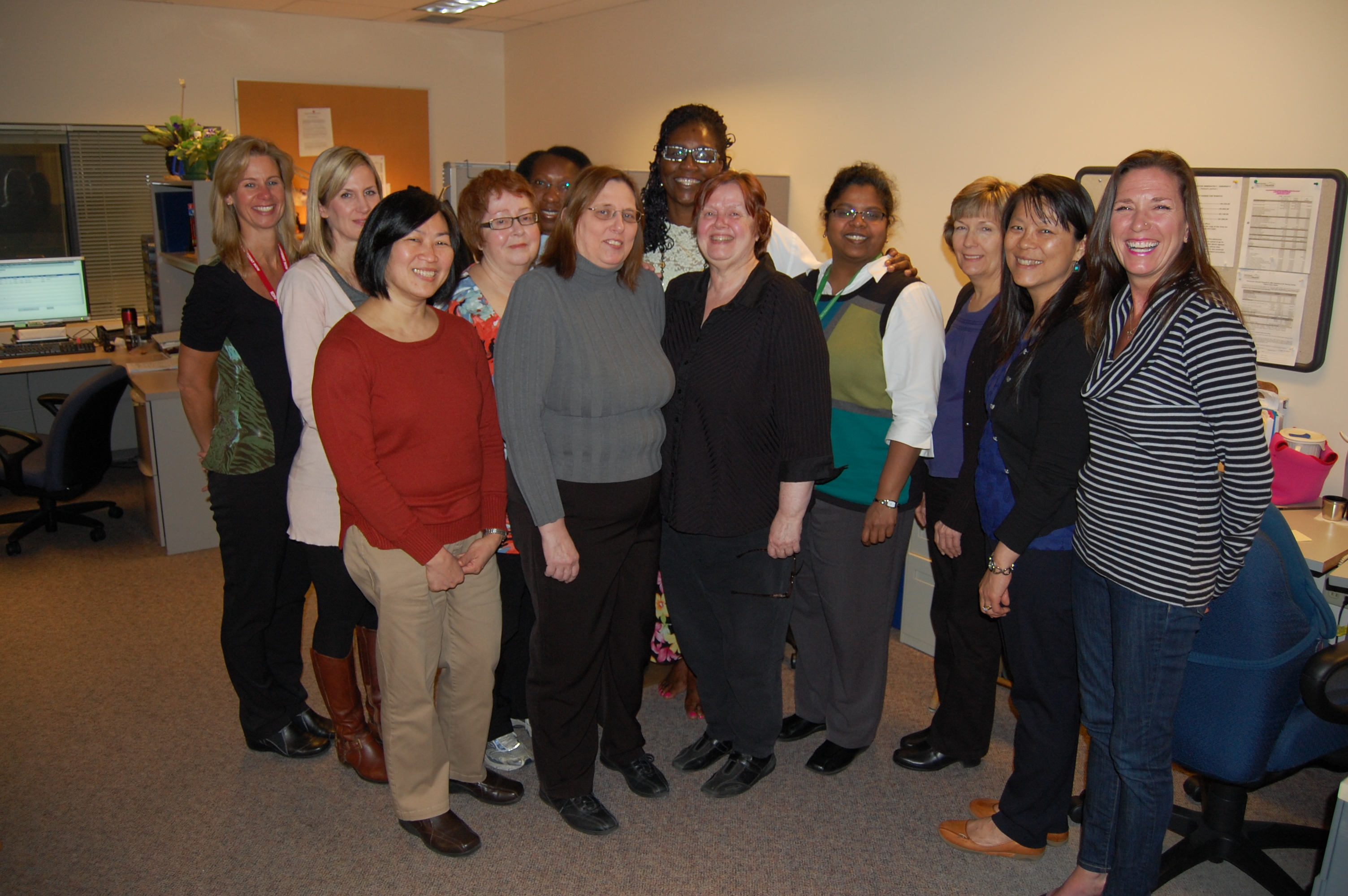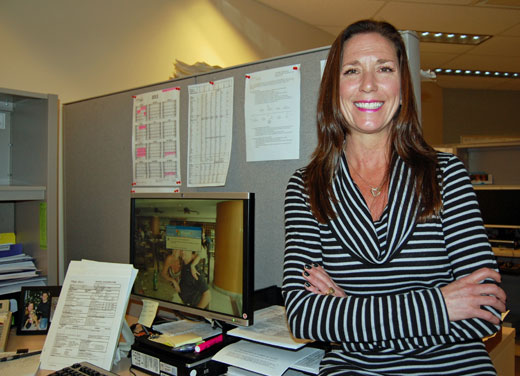VGH and UBCH surgical waitlists shrink by almost a quarter

OR Booking team: “We’re a tight-knit group, and we’re there to cover one another at a drop of a pin,” says Karin Gelinas, UBCH OR booking and slating clerk.
Visit Karin Gelinas at her workstation and you’ll find a clean, clutter-free desk. Her intray — carefully organized — would be the envy of many. Next to her desk, a large empty space is the only evidence of a very different time and place — a time when patients waited too long for surgery at VGH or UBCH.
“That’s where my filing cabinet used to stand,” says Karin, a UBCH OR booking and slating clerk. “Before we began tackling our waitlists, I was inundated with paperwork and outdated packages on patients waiting for surgery. Not anymore.”

“Reducing the waitlist took a lot of work in our already very busy days, but it was well worth it,” says Karin Gelinas, UBCH OR booking and slating clerk.
Over the past year VGH and UBCH surgical waitlists have shrunk 21 per cent. The number of patients waiting more than a year for surgery has dropped 69 per cent — that’s 900 fewer people waiting for surgery. We’ve made great progress, thanks to the efforts of our OR Booking team, surgeons’ offices and many others.
Partnering with surgeons’ offices
It all began with a Lean 5S project last summer, says Leanne Thain, patient services manager of the OR Booking Office and Pre-Admission Clinic.
“Our objective was to get rid of clutter, unnecessary paperwork and, most importantly, outdated patient packages clogging the waitlist. In the end, we discarded roughly 1,600 packages — equivalent to one filing cabinet per clerk. Now, our team can focus on what’s important — patients in need.”
Better communication with surgeons’ offices was key to this process. Together, they reconciled paperwork to ensure only those patients ready, willing and available for surgery remained on the waitlist.
“When we looked at my office practices, the lack of a system or logic became very obvious,” says Dr. Lennox. “It is a bit humbling to look critically at how you do something and realize there is significant room for improvement. However, the changes that we’ve made have overall been a good thing for my practice.”
Surgeons’ offices have taken practical steps and a standardized approach to ensuring the waitlist is and remains up to date based on a first-come, first-serve basis. Monthly check-ins with the OR Booking team ensures everyone is always on the same page — and far fewer pages, too.
Using our ORs more efficiently
In addition to improving administrative processes, management, analysts and surgeons at VGH and UBC worked collaboratively to implement other strategies including:
- Increasing the number of surgeries performed in the same available operating room time.
- Freeing capacity for the most complex surgeries at VGH by changing a surgeons’ assignment of operating room time between VGH and UBC Hospital.
- Allocating operating room time more equitably among surgeons, based upon patient need and how well surgeons are managing their waitlists.
“Ultimately it comes down to working collaboratively to improve patient flow and always looking to do the best with the resources we have,” says Dr. Bas Masri, surgeon-in-chief and head of orthopedics at VGH and UBC Hospital. “When we do that, there’s not only a cost savings to the hospital, but we’re working to create a more efficient health care system where patients can receive the care they need more rapidly.”
Striving for zero — yes, zero
Today, Leanne and her team have more confidence in their documentation and greater satisfaction knowing they’re making a difference for patients in need of surgery. With their help and the support of surgeons’ offices, Bas believes we can achieve even more.
Our next goal is to reduce the list of 300 patients still waiting for surgery for more than a year to … zero.
